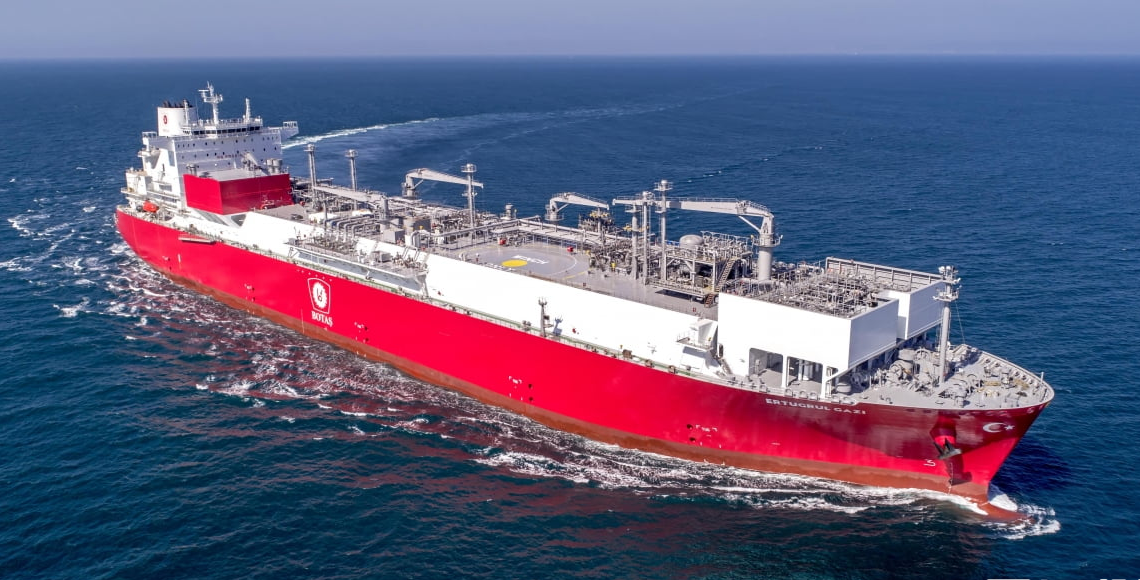South Korean media reported that South Korea’s three major shipbuilding giants, HHD Korea Shipbuilding & Offshore Engineering (HD KSOE), Hanwha Ocean, and Samsung Heavy Industries, will increase their operating profits by increasing the proportion of orders and construction of high-value-added vessels such as LPG/LNG carriers and Floating Liquefied Nature Gas units (FLNG), thereby responding to the slowdown in order growth.

The profit margin for a single LNG carrier is over 10%, making it a high value-added vessel; the profit margin for bulk carriers and crude oil tankers is only around 2% to 6%.
Gas carriers (LPG, LNG, and ethane carriers) account for 70% of HD Hyundai Heavy Industries’ order backlog. HD Hyundai Heavy Industries is improving its profit margin through a business strategy centered on LNG carriers.
Given current order volumes and future order expectations, HD Hyundai Heavy Industries is expected to achieve operating profit of 1.8705 trillion won (approximately US$1.355 billion) this year, an increase of approximately 165% over the same period last year.
Hanwha Ocean is currently focusing on LNG carrier sector, which accounts for over 60% of its order backlog. With a large number of new orders expected in the US LNG carrier market, this proportion is likely to continue to increase.
In addition, Hanwha Ocean is reflagging LNG carriers built by Korean shipyards as US-flagged vessels through its US shipping subsidiary, Hanwha Shipping. Hanwha Ocean’s move is expected to improve its performance, with operating profit expected to reach 1.422 trillion won (approximately US$1.03 billion) this year, a year-on-year increase of 338%.
Reflagging refers to a system that allows vessels built overseas to change their nationality to the United States. Even vessels built in other countries can be registered as American and put into service after going through this process. Hanwha Ocean is eligible for vessel registration because it owns a shipping subsidiary, Hanwha Shipping, in the United States, and is therefore allowed to reflag its vessels.
Samsung Heavy Industries is expected to focus on the FLNG sector. FLNG is equipment used to extract liquefied natural gas at sea, with high unit prices and operating profit margins of 15% to 20%.
In the first half of this year, Samsung Heavy Industries has increased the proportion of high value-added vessels by undertaking projects such as very large ethane carriers (VLECs) and LNG carriers, and is expected to undertake FLNG projects in the second half of the year. In 2025, Samsung Heavy Industries has obtained a preliminary contract for FLNG worth more than US$600 million. If the full contract is officially signed, it will be the first time that Samsung Heavy Industries has successfully undertaken an FLNG project again in five years. Samsung Heavy Industries’ operating profit this year is expected to increase by 46% from last year to 732.2 billion won.
South Korean industry analysts say that the country’s three major shipbuilding companies are increasing the proportion of high-profit ships based on the super boom in the shipbuilding industry, but an order gap is already apparent. Due to the slowdown in new ship orders globally, some predict that shipyards may experience empty berths starting in 2028.
South Korean industry analysts say that the three major shipbuilding companies are increasing the proportion of high-profit vessels based on the super boom in the shipbuilding industry, but an order gap is already apparent. Due to the slowdown in new building orders globally, it is predicted that from 2028, shipyards may have empty ship slots.
A representative from the South Korean shipbuilding industry stated, “If orders decrease, the only way to maintain performance is to improve quality, and the trend of concentrated investment in high value-added vessels will further intensify.”


